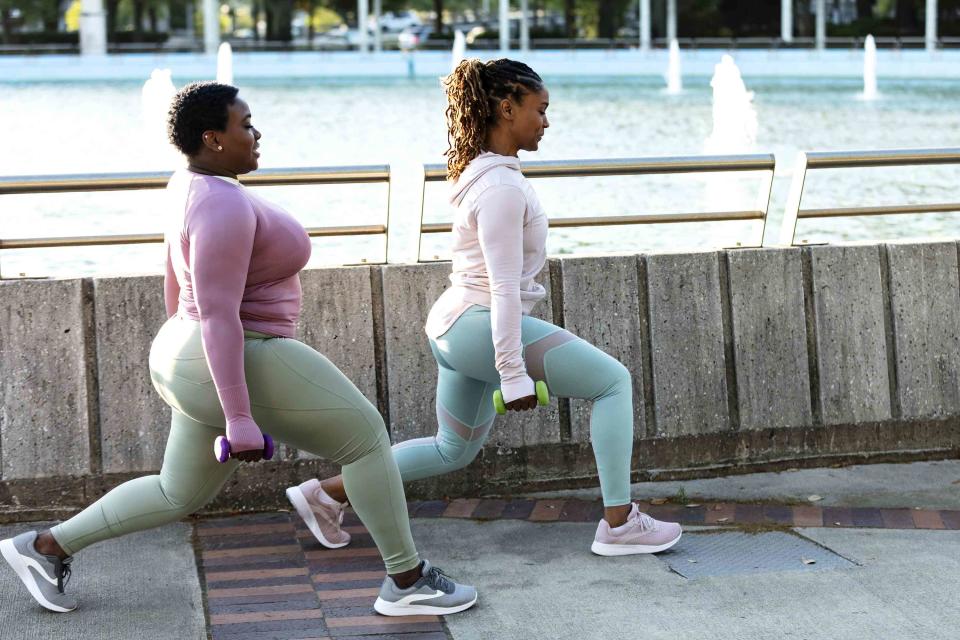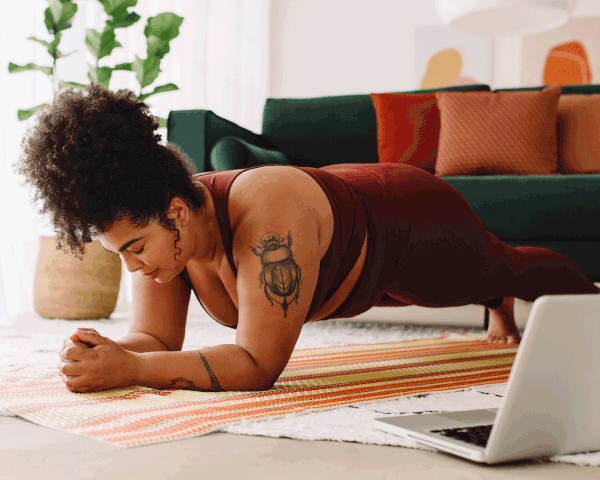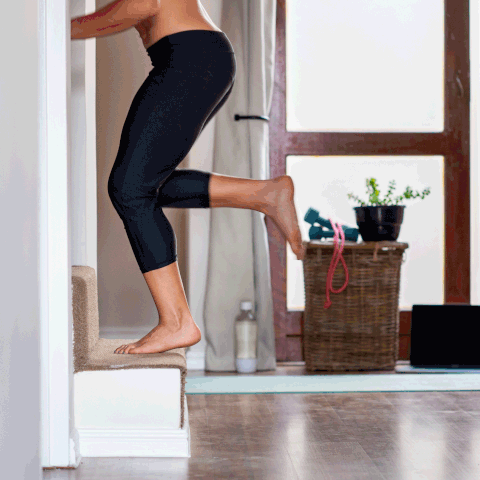Try These Low-Impact Exercises for a Tough, But Joint-Friendly Workout
Whether you're getting back into fitness, recovering from an injury, or just mixing things up, low-impact workouts are a great place to start.

Kali9/Getty Images
Low-impact exercise is far from a new concept, but it’s having its day recently. More fitness classes are being branded as low impact, and marketers are finding new ways to promote fitness tools by calling out their low-impact nature.
Whether you’re new to exercise or have been working out regularly for years, you can— and should—add low-impact exercise to your program. Here’s why, and how to get started.
What Is Low-Impact Exercise?
You might naturally think low impact means low effort, nothing could be further from the truth. “A low-impact exercise still gets your heart rate up while putting less pressure on your joints,” says personal trainer Cat Kom, founder and CEO of Studio Sweat onDemand. In other words, there’s no jumping or bouncing—no intense impact—in this type of workout. In fact a lot of very familiar activities are considered low impact, including walking, swimming, planks, cycling, stretching, yoga, Pilates, tai chi, and light strength training. Whereas high-impact exercise includes anything that requires both your feet to leave the ground at once: running, jumping rope, jumping jacks, fast stair climbing, and workout moves that involve jumping: box jumps, burpees, side lunge jumps, and so on.
:
Low-Impact Exercise Benefits
There are tons of advantages to incorporating low-impact workouts into your fitness rotation. While it comes with all of the health benefits you’d expect to reap from exercise in general, such as lowering your risk of conditions like heart disease and reducing your blood pressure, boosting metabolism, and supporting immunity and cognitive health—lower-impact movement comes with its own unique benefits.
For starters, it can help you maintain your fitness program overall. “Cycling a low-impact workout in between high-impact days will promote recovery while keeping you healthy and on track toward your goals,” says John Lindala, Oregon-based personal trainer, author, fitness consultant, and writer for Living.Fit.
Low-impact exercise is easier to do more frequently because the body doesn’t absorb as much force or load when doing it, and it’s generally regarded as safer and better on the joints than high-impact activities. Another win? “You can perform a higher volume of exercises or repetitions versus intensive exercise,” Lindala says. In fact, it’s not out of the question for a fitness program to consist mainly of low-impact exercises. Depending on your fitness level and injury history, you might only occasionally do high-impact types of exercise like running, jumping rope, doing a cardio dance class, or playing a sport like tennis.
And although low-impact exercise can absolutely be part of everybody’s fitness program, there are certain individuals who benefit most from this type of exercise, Kom says. They include anyone who's dealing with injuries or injury recovery, pre- or postnatal, just beginning a workout journey, and older individuals who need to take some pressure off their joints.
:
Low-Impact Exercise Moves to Get You Started
To give you a taste of a low-impact workout, Kom designed a full-body strength routine—no jumping required. Because some of the moves are dynamic in nature, you may even get that heart rate up a little. You can easily do this circuit at home, as the only equipment you need is one dumbbell. Do this workout several times a week, repeating the exercises two or three times during each workout. You can also tack the full routine or certain exercises onto the end of a higher-intensity day when you feel like it.
:
Dumbbell Curl and Press

Getty Images
Stand with your feet shoulder-width apart with your arms straight down in front of your body, holding one dumbbell with both hands—with each end of the dumbbell in one hand. Keeping your elbows by your sides, lift the weight toward your shoulders in a bicep curl. Then press the weight over your head until your arms are straight above you. Lower it down, first to your shoulders to complete the press, and then to starting position at your sides (to complete the second half of the bicep curl). Repeat eight times total.
Plank

Getty Images
There are a few plank variations and modifications you can try to suit your strength level. Start on the floor on your hands and knees. Walk your hands forward a few inches so your wrists are directly in line below your shoulders, and so your body forms one long line from your head to your knees. Hold for 30 seconds.
Make it more challenging: Lift your knees off the floor so you’re supported only by your hands and toes. Your body should form a long, straight line from your head to your heels. Hold for 30 seconds.
Make it even more challenging: Lower your elbows and forearms down to the floor, making sure to align your elbows directly under your shoulders.
:
Step Downs

Getty Images
Stand on top of a sturdy step stool, short bench, or stair step 6 to 12 inches high, with your body turned so you can step off the back of the step. Balance your weight on your left leg and hinge at the hips, allowing your upper body to tilt forward slightly as you tap your right toes to the floor behind your step. Return the right foot next to the left foot. Repeat 10 times on the right side before switching legs.
Lunges

Getty Images
Stand with your feet together and hands on your hips. Step your right foot forward about one or two feet in front. Bending your right knee, lower toward the floor until your left knee is close to the floor. Rise back up and return to the starting position. Switch sides and repeat, continuing to alternate until you’ve completed 10 repetitions per side.
:
Low-Impact Burpees

Getty Images
your shoulders. Step your right foot back, then your left foot back, so your body forms one long line from your head to your toes (you should be in a straight-arm plank position). Release, stepping your right foot in, then left foot in, toward your hands and return to standing. Repeat, this time leading with your left foot. Continue alternating until you’ve completed 10 repetitions.
:
For more Real Simple news, make sure to sign up for our newsletter!
Read the original article on Real Simple.

 Yahoo Movies
Yahoo Movies 
